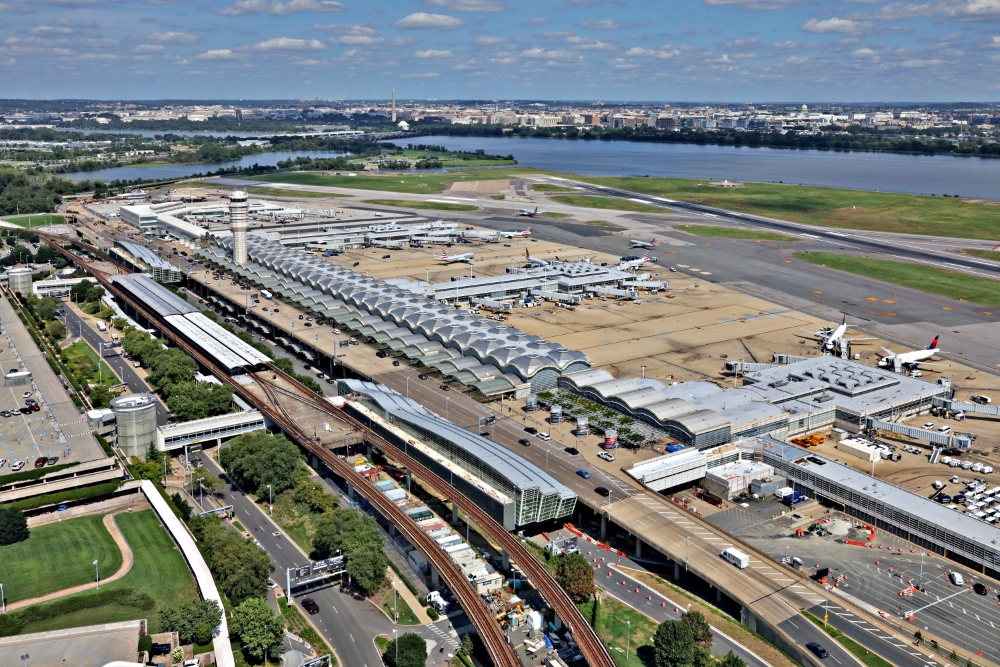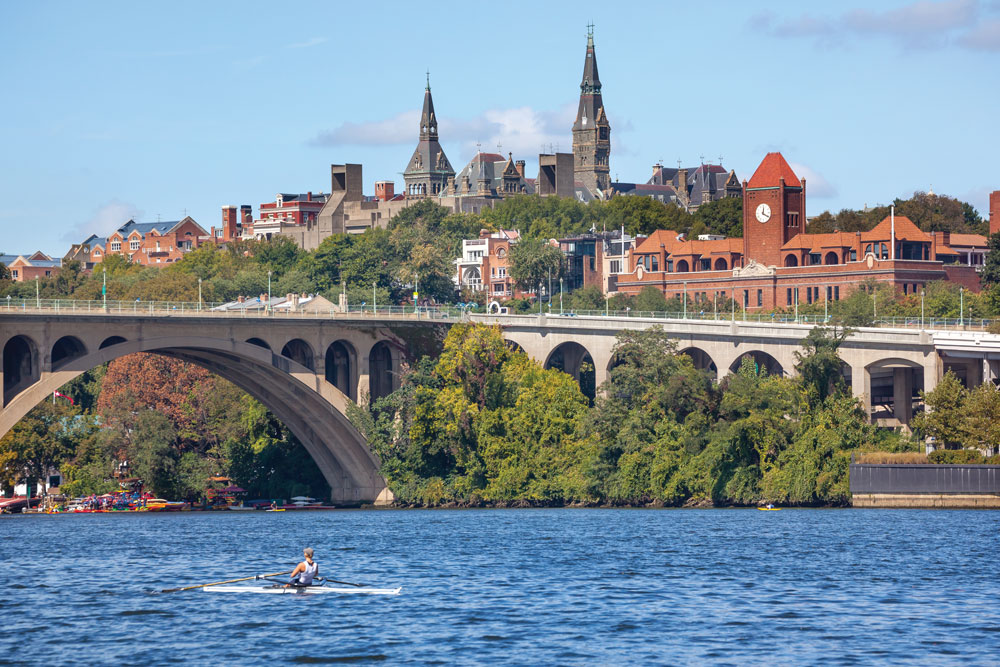They call New York the city that never sleeps, but even the Big Apple can’t hold a candle to the global influence wielded by the nation’s capital, Washington, DC.
Every major decision that impacts all of America and the rest of the world emanates from this 68-square-mile city that dates back to 1790. More than 700,000 people call the District of Columbia home, but its influence extends far beyond its federal borders.
For starters, DC anchors a tri-state region of 6.4 million people in DC, Maryland and Virginia — many of whom work in the capital city or otherwise rely on the federal government for their livelihood. Beyond that, 347 million Americans look to DC for national leadership, policy guidance, economic management and national security.
Being the seat of national power and global leadership brings with it a host of assets that make DC highly attractive to all kinds of businesses. Look beyond the many monuments and government offices and you will see a wealth of assets that appeal to most industries. These assets include such things as the main campuses of four world-class universities and satellite branches of 75 other institutions of higher learning; a best-in-class public transportation system that has become a model for the rest of the world; and access to three international airports that will take you virtually anywhere you want to go.
Combine that with Washington’s unique and attractive quality of life and central East Coast location, and you begin to understand why 19 Fortune 500 companies elected to call the District home and why Amazon selected National Landing for its HQ2.
Derek Ford, president and CEO of the Washington DC Economic Partnership, says there is literally no other place on earth like it. “Decisions made in this city affect everyone in the world,” he says. “We have a very talented workforce. That is why the city is stepping up and offering multiple incentive programs to entice even more employers to come here. We want to be the preferred tech hub on the East Coast. That is why we are offering incentives such as the DC Vitality Fund, the Global Soft Landing Program, the DC Venture Capital Fund and Growth Fund. This city will always reinvest in itself.”
For employers, says Ford, the city’s appeal begins with its talented workforce. More than 67% of the adults in DC hold a bachelor’s degree or higher, compared to 36% nationally. People who live in DC, adds Ford, like the fact that it has the No. 1 park system in the U.S., and 98% of all DC residents can walk to a park in 10 minutes or less.
Hungry? Try one of 25 DC restaurants that received a Michelin star in 2024. Enjoy arts and culture? Visit one of 74 historic and world-class museums, 60 theater and performing arts venues, and 21 free Smithsonian institutions.
With a median age of 35, DC ranks as one of the country’s youngest cities. Ford notes that the city thrives on its people, ingenuity and platform for making global impacts.
Looking for entrepreneurial tech talent? Ford says you’ll find it in DC. The recent 2024 CBRE Scoring Tech Talent report ranked Washington, D.C., No. 6 in North America. Among large markets, it is fourth-best on the continent.
For getting around, it’s hard to beat a DC Metrorail system that serves more than 500,000 commuters every day. And when your travel requires longer distances to be covered, the city offers connections to three international airports: Reagan National, Dulles International and Baltimore-Washington International.
These airports continually expand their service offerings. For example, Royal Jordanian Airlines recently launched new nonstop service between Amman’s Queen Alia International Airport and Dulles. British Airways recently began operating three daily flights from Dulles to London. And Reagan National just welcomed a brand-new Capital One Landing, offering a luxurious place for travelers to rest, relax and enjoy award-winning food and beverages.
When executives are ready to get down to business, the District offers a number of programs to help companies find the right location. The city offers 25 Opportunity Zones for new development and a variety of helpful business incentive programs. These include a Revenue Bond Program; DC Department of Employment Services; the Work Opportunity Tax Credit; On the Job (OJT) Training; and Apprenticeship programs.
Supermarket Tax Incentives make it enticing for grocers to set up shop in city neighborhoods; and the Creative Open Space and Modernization (COSM) program is an incentive designed to support the growth of large companies that make a long-term commitment to locate in DC. Eligible firms can receive an annual tax rebate for up to five years to offset property taxes and tenant improvements.

Aerial view of Reagan National Airport.
Photo courtesy of MWAA
Air Service Expands for DC Area Residents
The Metropolitan Washington Airports Authority at One Aviation Circle in Washington, D.C., is a busy place these days. Managing operations at two of America’s busiest and most important airports is more than a full-time jobs for thousands of workers. It is part of the lifeblood that keeps government, commerce and personal travel moving in the world’s most important city.
Recently, we caught up with James Johnson, head of media relations for MWAA, for the following interview.
Both Dulles and Reagan experienced significant passenger volume increases in 2024 from 2023. What were the main reasons for this sharp climb?
JOHNSON: In 2024, Dulles International Airport experienced 7.1% annual growth in domestic passengers and 11.2% growth in international passengers — far exceeding U.S. averages in both metrics. The main drivers of this growth were the Airports Authority’s airline business development efforts to secure new and expanded air service, Dulles’ low operating cost for airlines, and United Airlines’ commitment to substantially grow its Dulles hub. Additionally, air travel levels have risen since the Covid-19 pandemic.
Dulles added many new routes in 2024. Which of these new routes have proved to be the most popular?
JOHNSON: Dulles Airport secured 27 new destinations in 2024 from 10 airlines — 17 of those destinations were new routes for Dulles, while the other 10 came from airlines adding more flights on existing routes. Service to new cities include Anchorage, Alaska; Philadelphia, Pennsylvania; Palm Springs, California; and New Haven, Connecticut. Of the 10 airlines that added service at Dulles, six were new entrant airlines. With these new options, Dulles now serves more than 150 destinations around the world with nonstop flights — more than any local airport. It is too early to calculate which new route is the most popular.
Have you added any new ground transportation improvements at either airport in the past year?
JOHNSON: The Airports Authority offers a wide range of ground transportation options for customers at Reagan National and Dulles International. Among them are Metrorail, rideshare, buses, car rental and taxi companies. In addition, curbside valet parking services are available at Dulles Airport.
Public transit to both airports via Metrorail continues to be a popular choice. The Silver Line has a station at Dulles International Airport, and the yellow and blue lines serve Reagan National Airport. Passengers boarding Metrorail can ride to 98 stations around the National Capital Region.
Are there any infrastructure projects ongoing or planned for the near future at either airport?
JOHNSON: A 15-year lease agreement between the Airports Authority and airlines took effect in 2025 and includes a $9 billion capital improvement program for Reagan National and Dulles International airports. Under the program, $6.99 billion for Dulles International includes a new 14-gate concourse, design work on a fifth runway and other facilities to accommodate additional flights and passengers as air travel continues to grow. At Reagan National, a $2.39 billion capital construction program includes adding new restrooms and other passenger amenities, as well as the future replacement of the main concourse in Terminal 1.

